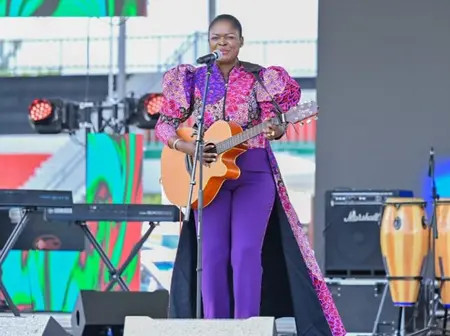For decades, vernacular music in Kenya was largely regional. Kikuyu Benga tracks played mainly in Central Kenya, while Kamba songs rarely left Ukambani. Over time, pioneering artists challenged this pattern, introducing ethnic sounds to broader audiences and, in some cases, international listeners.
Tony Nyadundo and Suzanna Owiyo brought Ohangla to the mainstream. Nyadundo, dubbed the King of Ohangla, modernised the Luo drum-based genre, with hits like ‘Ndoa ya Machozi’ boosting its national profile. Suzanna Owiyo introduced a contemporary, Benga-inspired style, with tracks like ‘Kisumu 100’ resonating beyond her hometown and earning international attention. Other Luo artists, including Onyi Papa Jey and Princess Jullie, contributed to the national appeal of Ohangla and Luo-inspired Benga. Today, artists such as Okello Max, Costa Ojwang, and Prince Indah continue to innovate, taking the sound to larger stages and younger audiences.
In Kikuyu music, Joseph Kamaru laid the groundwork, which was further developed by John De Matthew. De Matthew modernised Kikuyu Benga by incorporating contemporary themes of love, politics, and morality. Kamande wa Kio brought Mugithi into urban spaces, while Mike Rua earned recognition for his bold stage presence and reinventions of Mugithi, becoming known as the ‘King of Mugithi’. Modern Kikuyu music thrives under artists like Samidoh, Jose Gatutura, and DJ Fatxo, who have made the genre a fixture in concerts, clubs, and international tours.
Ukambani produced Kakai Kilonzo of the Kilimambogo Brothers Band, who helped shape Kamba music. Later, Ken wa Maria transformed Kamba Benga into a pan-Kenyan dance-floor genre with hits such as ‘Fundamentals’. Today, Alex Kasau Katombi, Maima, and Mutulani Marcus carry the Kamba music tradition forward.
From the Rift Valley, Kipchamba arap Tapotuk gave Kalenjin music a poetic and traditional voice. Emmy Kosgei later expanded Kalenjin sounds globally, blending vernacular with Afro-fusion and creating hits like ‘Emily Chepchumba’, which became widely celebrated beyond Rift Valley communities. Younger Kalenjin artists continue to diversify the genre, spanning gospel, party anthems, and contemporary music that appeals to both rural and urban audiences.
The success of these pioneering artists inspired other regions to invest in music production and promote their cultural sounds. As vernacular songs began topping national charts and filling stadiums, more communities embraced recording, performing, and sharing their unique musical identities, helping transform Kenya’s ethnic music into a shared national soundtrack.

Leave a Reply